Martha and the Vandellas – Nowhere To Run (released February 10, 1965)
Considered by many to be one of Motown's all-time greatest songs, this masterpiece was written and produced by Holland-Dozier-Holland.
View most updated version of this post on Substack
Search our full archives
On February 10, 1965, Motown released the classic song “Nowhere To Run” by Martha and the Vandellas.
The group’s origins date to 1957, when Detroit teenagers Rosalind Ashford and Annette Beard joined a girl group called the Del-Phis. Martha Reeves, whose family had moved to Detroit from Alabama, replaced another member soon afterwards. By 1960, Reeves had left the group and was singing in the city’s nightclubs as a solo artist. Spotted by Motown’s first A&R director Mickey Stevenson while performing at the 20 Grand, he called her in to audition but ended up hiring her as his secretary.
One afternoon in 1961, when Mary Wells was sick and had to miss a recording session, Reeves took her place with the former Del-Phis on backing vocals, who by that time had changed their name to the Vels. Berry Gordy was impressed enough with the demo they cut to offer them a contract, and came up with their new name Martha & the Vandellas.
Their first huge hit “Heat Wave” was released in July, 1963. Written by the Holland-Dozier-Holland songwriting team (Brian and Eddie Holland plus Lamont Dozier) and co-produced by Dozier and Brian Holland, it shot to #1 R&B and #4 on the Billboard Hot 100. It was nominated for a Grammy for Best R&B Recording, the first Grammy nomination received by a Motown act.
Annette Beard left the group in 1964 to raise her first child, and former Velvelettes singer Betty Kelly took her place. Almost exactly a year after “Heat Wave” dropped, their biggest-ever song debuted in late July, 1964. “Dancing In The Street” was the first advance single from their new album Dance Party, which wouldn’t be released until April, 1965. It was co-written by Stevenson, Ivy Jo Hunter, and Marvin Gaye, and hit #2 on the Hot 100 and #4 on the UK singles charts. This was during the short period when Billboard had discontinued its R&B chart because so much R&B was crossing over to the Hot 100, but it also reached #8 R&B in Cashbox.
That November, their follow up single “Wild One” went to #11 R&B and #34 on the Hot 100. Co-written and produced by Stevenson and Hunter, its backing track was an alternative version of the one used for “Dancing In The Street.”
After “Wild One” failed to duplicate the success of their previous single, it was Holland-Dozier-Holland’s turn to work their magic again. The third single from the group’s still yet-to-be-released Dance Party LP was “Nowhere to Run,” written by the three songwriters and produced by Dozier and Brian Holland. It was recorded on October 21, 1964 at Motown’s original recording facility, Studio A in the Hitsville U.S.A. headquarters, located at 2648 West Grand Boulevard.
Reeves sang lead vocals, with Ashford and Kelly backing her up. The Funk Brothers who played on the track were Robert White and Eddie Willis on guitars, bassist James Jamerson, Earl Van Dyke on piano, Benny Benjamin on drums, Jack Ashford on percussion, tambourine, and vibes, Russ Conway and Herbert Williams on trumpets, George Bohanon and Paul Riser on trombones, and Henry Cosby and Mike Terry on saxophones. Ivy Jo Hunter provided additional percussion using snow chains to give the song an especially hard, driving sound.
The B-side was “Motoring,” written solely by Stevenson, which was a fairly unremarkable song compared to “Nowhere To Run.” But on the strength of its A-side the single was a smash hit, peaking at #5 R&B and #8 on the Hot 100. It sold over 200,000 copies in the UK.
In the years that followed, the song was notably covered by Laura Nyro with Labelle on backing vocals for her 1971 Gonna Take A Miracle LP, and by R&B singer/backing vocalist Arnold McCuller for the soundtrack to director Walter Hill’s cult classic The Warriors (1979).
McCuller’s version was featured in one of the film’s pivotal scenes, broadcast on the New York City airwaves as a special request from the city’s most powerful gang the Gramercy Riffs to the Coney Island-based Warriors. After being framed for the murder of Cyrus, leader of the Riffs, they were forced to escape from the Bronx back to Brooklyn while being hunted by every gang member in town.
At one point, Lamont Dozier said he had been moved to write “Nowhere To Run” when he looked out his window and saw tanks rolling down the street. This may have been apocryphal, since the Detroit Riots occurred in 1967, three years after the song was composed. But in a 2015 interview, he gave a fuller accounting of how it was first inspired:
“It was a lot of stuff. There were riots at the time in Detroit in the 1960s. I remember meeting a little kid who was on his way to Vietnam. He was frightened. Oh God, he must have been about 19. His friends asked if I would throw a party for him at my house before he was shipped out. We had the party, but he was very solemn, just sitting with his girlfriend. He had a premonition that he wouldn’t be coming back. I told him to be positive, but he was adamant. I found myself thinking about how he was feeling trapped – nowhere to run. Sure enough, two months later they shipped his body back. I think he stepped on a landmine. Nineteen years old.”
Further info:
“Martha Reeves: 'The only thing that can change things is music',” The Guardian, April 16, 2015.
“Lamont Dozier: 'The songs just kept coming',” interview by Dave Simpson, The Guardian, August 26, 2015.
“A Look Back at Martha and the Vandellas' Performance at a Ford Plant,” Hour Detroit Magazine, July 19, 2022.
#soul #funk #Motown #TheWarriors #MarthaAndTheVandellas #NowhereToRun




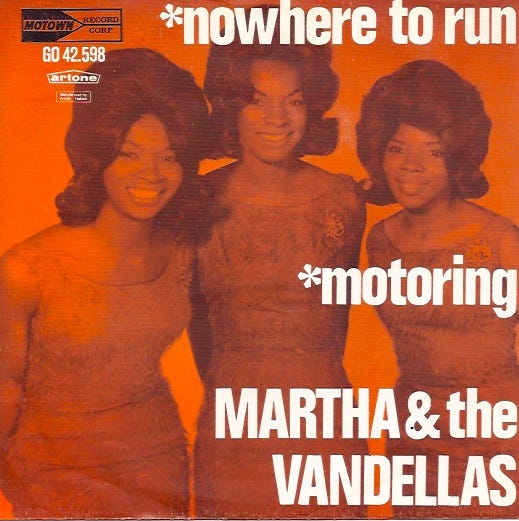
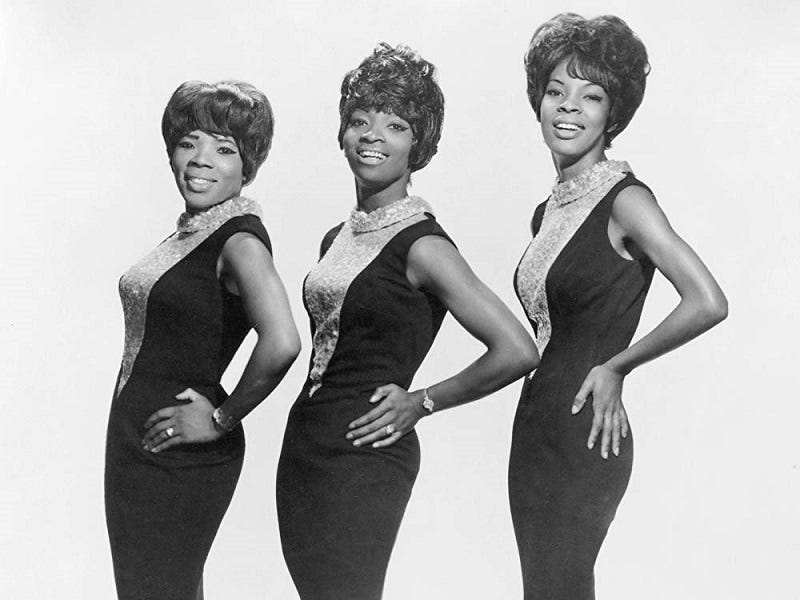
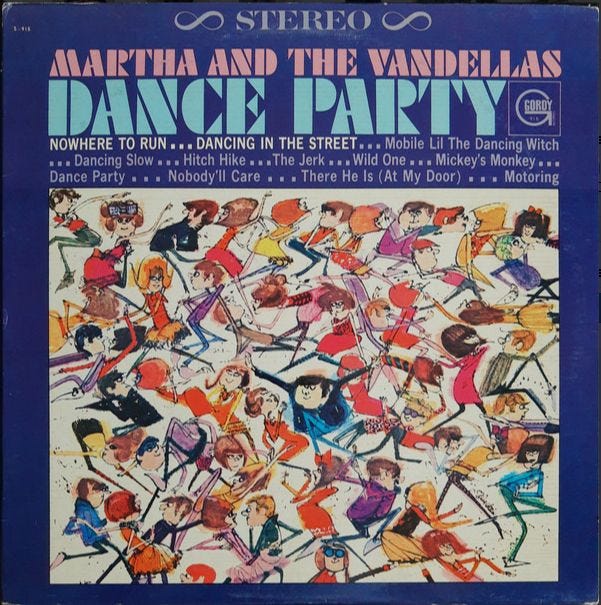
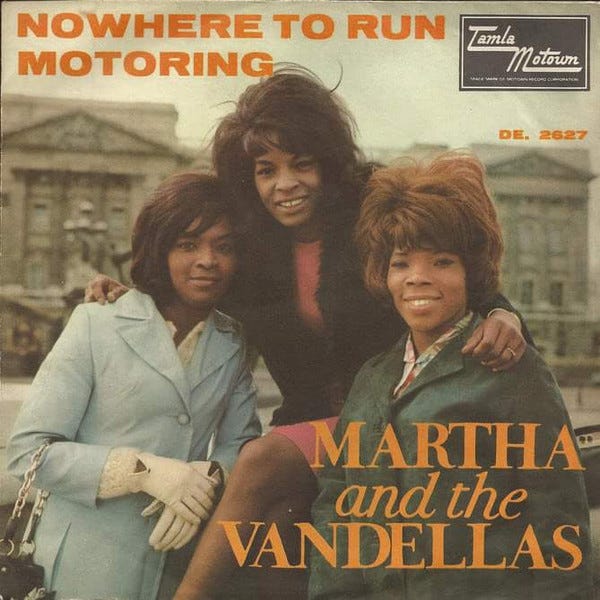
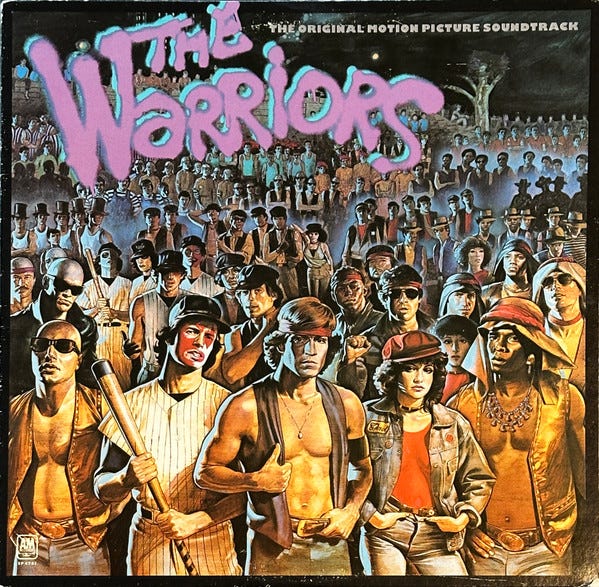
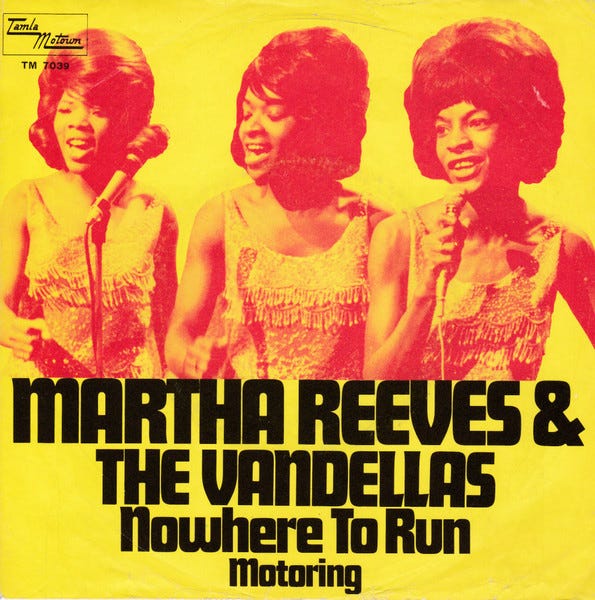
There must be a God because she let me see Martha and The Vandellas three times in the ‘60s. Twice at the Howard Theater in Washington, D.C. as the opening act for Otis Redding on one occasion, the second time later as the opening act for Percy Sledge. Both were matinee performances. After the Sledge session was over my friends and I went across the street to Waxie Maxie's Record Store (which sold only soul and r&b records), and I noticed this sleek sports car, a convertible, parked across the street. I was pointing it out to my friends when Martha herself walked up to the car and sat in the front seat. I yelled, “Hi Martha!” And she turned to me, smiling and waving as the car sped off. A very cool moment.
In 1969 I hitchhiked from NC to VA to watch a friend play a college football game. I took a tab of orange acid (the best) with me to drop the night of the game — my friend was in a fraternity and asked me to attend. Plus, they had a local band.
It sounded boring. I dropped the tab and wandered around the campus, eventually encountering two other guys on acid. They recommended that I get a date and go to the Homecoming main event: an appearance by Martha and The Vandellas. I couldn’t get in without a date, since I wasn’t a student there; so I went to a girls dorm and asked the girl at the desk for help.
She could tell right away that I was tripping and said she’d help. She got on the intercom and announced that there was a guy in the lobby who needed a date for the concert. A minute later a girl entered the lobby, grabbed my arm, and said, “Let’s go.”
When we got there the opening act was just finishing their set: Rhinoceros. I was the only person I ever knew who had their album, much less had ever heard of them. Playboy Magazine had given the band's album a positive review, but the album was completely stupid. One good song, though. An instrumental.
But Martha and The Vandellas appeared next almost immediately; I think so anyway. They looked really beautiful. Tripping on my favorite acid will make almost anything fantastic, but this was one of my favorite bands ever; and I took in every note. The lighting bathed them in blue or red for most of the set.
After a half hour or so of an excellent set Martha was convinced that they’d forgotten a song, but she couldn’t think of what it was. The Vandellas were sure they’d covered all the classics. A band member called Martha over and whispered to her. She laughed and walked to the mic and said, “We forgot to sing ‘Jimmy Mack’!” The show rolled on.
My date and I never spoke to each other once during the show, and she split long before the set was over. I left the auditorium and spent the rest of the night at the fraternity house. That's another story.
“Can’t forget the Motor City.”
Goddamn I love this track.